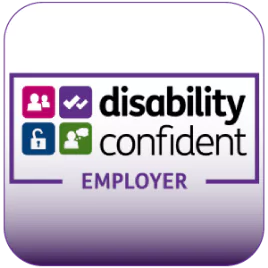Events of the last 12 months mean many businesses are refocusing efforts in areas that were once overlooked. For most, diversity is now a board level objective yet still an area where significant improvements are required to create and sustain more inclusive workplace in 2021.
Research has shown that having a diverse workforce is fundamental for maximum productivity and overall business success. McKinsey’s recent report found that businesses focused on racial and ethnic diversity were 36% more profitable than those that were not. Additionally, it highlighted a 48% difference in financial performance between the most and least gender-diverse companies.
Taking action
With candidates increasingly calling for employers to define and demonstrate D&I strategies, coupled with research that diverse groups, including women, LGBTQ+ employees, people of colour and working parents, were the hardest hit by the Covid-19 pandemic, it’s clear why there’s a greater sense of urgency surrounding D&I in 2021.
Omni’s Resourcing and Talent Planning Survey, delivered in partnership with the CIPD, confirmed that some progress was already underway in 2020. Overall, 52% have a formal diversity strategy, although most take some steps to recruit a diverse range of candidates; and two in five (41%) actively recruiting a more diverse workforce compared to the previous 12 months. However, our findings also suggested that more progress needed to be made, as less than a quarter (23%) were going beyond legislative requirements on protected characteristics regarding their recruitment and selection processes.
Next steps
Implementing a strategy that helps attract, recruit, onboard and retain diverse talent requires time, intention and robust planning. Here are the key areas of focus for any organisation looking to achieve the business imperative of D&I.
Analyse
It’s vital to establish areas for improvement from the outset. Look at the employer brand your business is portraying from a job seeker’s perspective. People want to see themselves represented in your business and, if they don’t, they will more than likely look elsewhere.
Employer branding messages extend further than a ‘Meet the Team’ page on a website and covers the design of your working practices; job design and your communication style. Online language checkers are available if you are unsure of the suitability of the language used in recruitment advertising, for example. Conducting an audit will provide a snapshot of where you are now and help to highlight your next steps.
Rethink
- Requirements. Reassess job descriptions to focus on skills and attributes rather than just credentials. Formal education and years of experience do not necessarily equate to talent and competence, so review the specific skills employees need to succeed for each role and establish how these can be identified and measured.
- Advertising. Changing the language used in job adverts can attract a wider pool of talent. The previously mentioned online language checkers are good tools to ensure adverts don’t contain language that’s biased towards a particular demographic. Additionally, where you advertise is crucial. Look at the job boards and channels you usually post to and whether more can be added to reach new audiences.
- Policies and benefits. For some groups, such as those with care responsibilities, physical disabilities or mental health conditions, the ability to work flexibly is crucial. Offering flexibility, such as working from home and alternative working hours, not only helps to attract more diverse candidates but can reduce employee turnover.
- Technology. Utilising the right recruitment technology can have significant impacts on hiring outcomes. Software that can hide potentially influential information (photographs, names, dates of birth) has been around for some time. On the other hand, artificial intelligence tools that can boost diverse hires by shortlisting based on skills and experience are a more modern addition. Additionally, a valid and reliable personality assessment can effectively measure personality traits, motivations and skills, with scores proven not to differ between minority groups.
- Data. Collecting and acting on data is vital to measure the success of a D&I strategy. It should be collected at each stage of the recruitment process and should start with an environmental scan and understanding of the demographics of your target population, and then the practical side of hiring – applications, shortlisted candidates, first / 2nd stage selection and offers. And don’t stop there, it’s then critical to look at how inclusive your culture is and so measures of retention, engagement and promotion are also as critical. who gets the job and how long they stay with the business. Such data will help to identify any patterns or particular areas that require attention.
Take responsibility
It’s not enough to claim you are a diverse organisation; it must be demonstrated. Transparent internal and external reporting on diversity strategies and processes will ensure it remains a priority and that the right people are held accountable. Many FTSE 100 companies are now sharing diversity figures each year and the steps they are taking to improve.
Sharing regular updates with employees will also help grow and nurture an internal culture reflective of D&I, further boosting your employer brand to diverse talent.
We can help you get started...
Omni’s Resourcing Effectiveness Assessment is the ultimate health check for your organisation’s talent acquisition strategy. Our D&I measures alone look at Fair by Design; Inclusive Attraction; Fair Selection and Measures of Inclusion. Take our online REA assessment to identify your current strengths and development areas and receive a report on how you can increase resourcing effectiveness and become more agile in 2021. Complete Omni’s Resourcing Effectiveness Assessment now.









